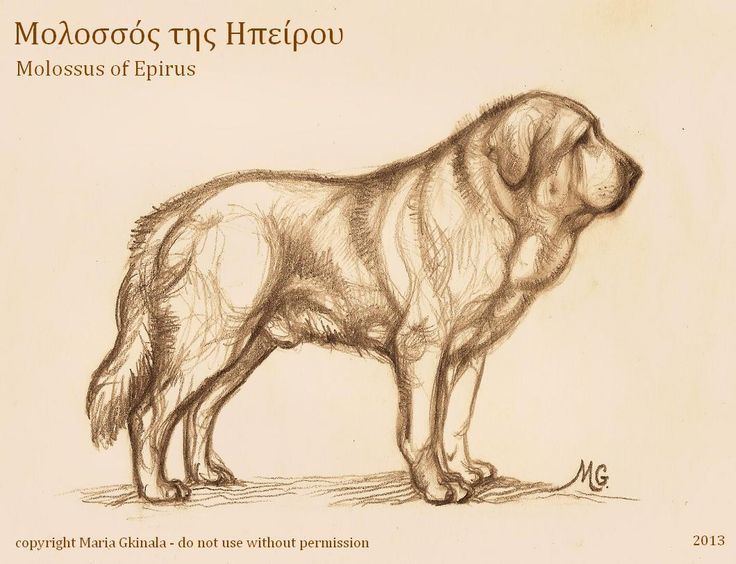Scientific name Canis lupus familiaris Rank Breed | Higher classification Dog Origin Greece, Albania | |
 | ||
Similar Molossus of Epirus, Bullenbeisser, Alaunt, English Mastiff, Kurī | ||
History

This ancient extinct breed of dog is commonly considered to be the ancestor (in rivalry with the Alaunt, the dog of the Alans) of today's Mastiff-type dogs and of many other modern breeds. Mastiff-type dogs are often referred to as Molossus dogs or Molossers. It is one of the best-known breeds of the antiquity; however, its physical characteristics and function are debated. The Molossus breed still exists in its original form in the mountainous regions of Albania. This large ancient breed was, along with the Tibetan Mastiff, an important ancestor of modern breeds such as the English Mastiff, St. Bernard, Great Pyrenees, Rottweiler, Great Dane, Newfoundland, Greater Swiss Mountain Dog, and Bernese Mountain Dog.
Dogs were used by the Illyrian/Epirotan tribes for war purposes, and they were undoubtedly used much earlier in history. The Roman Empire, starting with Marcus Aurelius, also used dogs in combat. The Romans trained the Molossian dog (or Canis Molossus) specifically for battle, often coating them in protective spiked metal collars and mail armor, and arranging them into attack formations.

Some scholars contend that the Molossus was a dog used by the Ancient Greeks for fighting. They describe it as having a wide, short muzzle and a heavy dewlap (similar to modern Mastiff breeds) that was used to fight tigers, lions, elephants, and men in battle. A Roman copy of an original sculpture of a guard dog (known as the Jennings Dog) is generally considered to represent a Molossus and can be seen at the British Museum.
Others argue that it was primarily a lightweight dog used for hunting and herding with physical characteristics more akin to Greyhounds or possibly the American Pit Bull Terrier.

Most scholars agree that the Molossus originated with the Molossis people in the mountainous regions of south eastern Albania and north western Greece. The Molossians were renowned for their vicious hounds, which were used by Molossian shepherds of Epirus in the mountains of Epirus to guard their flocks. The poet Grattius, a contemporary of Ovid, writes "...when serious work has come, when bravery must be shown, and the impetuous War-god calls in the utmost hazard, then you could not but admire the renowned Molossians so much."

The breed was native to Epirus(present day Albania and Greece) and the rest of the Balkans. It was later spread to Italy and other places around the Mediterranean and across Europe. Virgil says that in ancient Greece the heavier Molossian dogs were often used by the Greeks and Romans for hunting (Canis venaticus) and to watch over the house and livestock (Canis pastoralis). "Never, with them on guard," says Virgil, "need you fear for your stalls a midnight thief, or onslaught of wolves, or Iberian brigands at your back." Aristotle mentions them in the history of animals and praises their bravery and physical superiority.
The breed's name was used to name the bat Molossus and, in turn, the family Molossidae.
